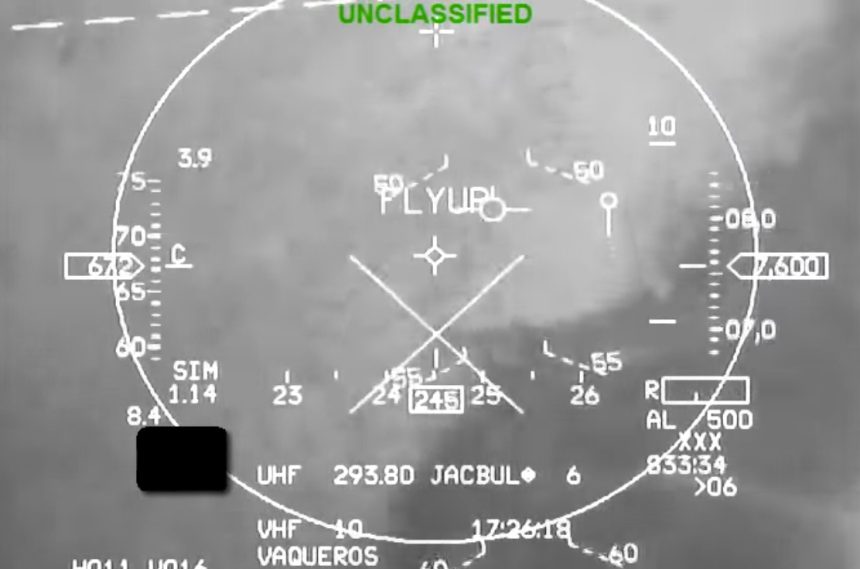The Automatic Ground Collision Avoidance System (Auto-GCAS) recognized the F-16’s dangerous attitude and automatically performed the recovery that saved the life of an unconscious student pilot.
Obtained by Aviation Week, the declassified footage below shows the importance of Ground Collision Avoidance Technology (GCAT).
It was filmed from the HUD (Head-Up Display) of a U.S. Air Force Arizona ANG F-16 whose student pilot was rendered unconscious by high-G BFM (Basic Fighter Maneuver) up to 8.4g during a training flight.
With the pilot suffering G-induced loss of consciousness (G-LOC) the aircraft started an uncontrolled steep descent from 17,000 feet in full afterburner.
You can clearly hear the worried IP (Instructor Pilot) radio “Two, recover!”, three times as the aircraft, 55-degree nose down, thundered towards the ground at more than 600 knots.
When the aircraft seems to be destined to hit the ground, the Auto-GCAS detects the unusual attitude and executes a recovery maneuver at around 8,700 ft. and 650 kt, saving “Sully 2” from CFIT (Controlled Flight Into Terrain).
We have analysed GCAT in depth with an article by USAF Flight Surgeon, Capt Rocky ‘Apollo’ Jedick, last year.
As explained in that story, two of the most common human factors conditions that lead to death or loss of aircraft in combat aviation are spatial disorientation and G-induced loss of consciousness (G-LOC).
Spatial Disorientation is the inability to determine one’s position, location, and motion relative to their environment. The Pilot-Activated Recovery System (PARS) will save pilots suffering from recognized Spatial-D as long as the pilot remains able to activate the technology. If a pilot is spatially disoriented but remains unable to initiate PARS, Auto-GCAS should theoretically still save him/her from CFIT.
Auto-GCAS provokes inputs to the flight controls automatically without pilot initiation. The technology relies on sophisticated computer software, terrain maps, GPS and predictive algorithms that will ‘take the jet’ from the pilot when CFIT is predicted to be imminent.
Although Ground Collision Avoidance Technology has proved to save several lives (this is the fourth confirmed “save” by the Auto-GCAS system since the system was introduced in 2014 according to AW’s Guy Norris) it has some significant software and hardware limitations.
For example, as we highlighted last year, the system is not able to make inputs on the throttle. If the power reduction is required for the optimal recovery GCAT systems (as Auto-GCAS and PARS) might be unable to initiate recovery overriding the current throttle setting.
















